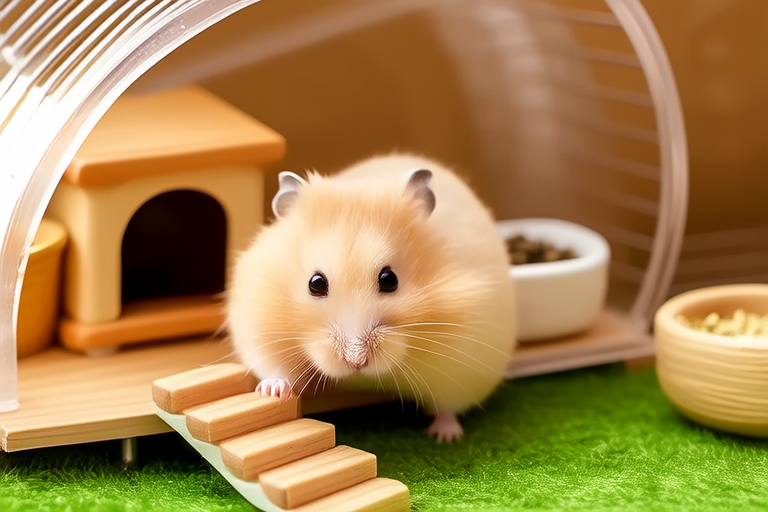How to Create a Dream Home for Your Little Hamster Pal
Introduction to Hamster Housing Needs
Welcome to the world of hamster ownership! Creating a dream home for your little hamster pal involves understanding their specific needs. Hamsters are small, nocturnal creatures that require a safe, comfortable environment where they can feel secure and thrive. Their homes must provide ample space for exercise, rest, and exploration. In this guide, we will walk you through everything you need to know about setting up the perfect habitat for your furry friend.
Selecting the Right Cage Size and Type
The first step in creating a dream home for your hamster is choosing the right cage. The cage should be large enough to allow your hamster to move around freely but also provide a sense of security. A minimum size of 8 inches by 12 inches by 12 inches (20cm x 30cm x 30cm) is recommended for dwarf hamsters, while Syrian hamsters require at least 12 inches by 24 inches by 12 inches (30cm x 60cm x 30cm).
There are various types of cages available on the market, including wire mesh cages, glass aquariums, and plastic multi-level cages. Wire mesh cages offer excellent ventilation and easy access for cleaning, but they may not be suitable for dwarf hamsters as their claws can get caught in the wires. Aquariums provide better insulation against drafts but lack proper ventilation, which can lead to respiratory issues. Multi-level cages offer more space and opportunities for climbing and exploring, making them ideal for active hamsters.
The Importance of Bedding Materials
Choosing the right bedding material is crucial for your hamster’s comfort and well-being. Bedding provides warmth, cushioning, and helps maintain a clean environment. Opt for soft, dust-free bedding such as paper-based bedding or wood shavings from untreated wood. Avoid cedar and pine shavings, as they contain aromatic oils that can irritate your hamster’s respiratory system. Layer the bedding to a depth of at least two inches (5 cm) to ensure it provides adequate insulation and allows your hamster to burrow comfortably.
Creating Safe and Stimulating Environments with Tunnels and Hideouts
Your hamster’s home should be both safe and stimulating. Provide plenty of tunnels and hideouts to encourage exploration and natural behavior. Tubes made of safe, chewable materials like cardboard or plastic are great additions to any hamster habitat. Ensure these tunnels are connected to various parts of the cage, offering multiple entry and exit points. Additionally, include cozy hideouts where your hamster can retreat for privacy and sleep. Ceramic pots, wooden houses, or even small cardboard boxes can serve as effective hideouts.
Proper Food and Water Dispensers Setup
Feeding your hamster properly is essential for their health and happiness. Set up a sturdy food dish and water bottle within easy reach. Hamsters are prone to tipping over dishes, so opt for heavy ceramic dishes that are less likely to move. Fill the food dish with a balanced diet consisting of commercial hamster pellets, fresh vegetables, and occasional treats like sunflower seeds or raisins. Always keep a constant supply of fresh water available by attaching a sipper bottle to the side of the cage.
Maintaining Hygiene and Cleaning Schedules
Keeping your hamster’s home clean is vital for their health. Establish a regular cleaning schedule to remove waste, replace bedding, and sanitize the cage. Spot clean daily by removing droppings and soiled bedding. Perform a deep clean every week, washing all accessories and replacing the bedding completely. Use mild, pet-safe disinfectants to sanitize the cage and its components. Ensure the cage dries thoroughly before reintroducing your hamster to prevent any risk of mold or mildew.
Safety Precautions
Safety is paramount when designing your hamster’s home. Avoid placing the cage near direct sunlight or drafts, as these can cause stress and health problems. Ensure there are no gaps or openings larger than 0.5 inches (1.27 cm) to prevent your hamster from escaping or getting injured. Supervise children when handling the hamster or interacting with its habitat to prevent accidental harm. Regularly check the cage and accessories for signs of wear and tear, replacing any damaged items promptly.
Tips for Ongoing Enrichment and Monitoring Your Hamster’s Happiness and Health
To keep your hamster happy and healthy, continue enriching their environment with new toys and activities. Rotate their toys periodically to prevent boredom and encourage mental stimulation. Spend time interacting with your hamster each day, providing gentle handling and playtime. Observe your hamster regularly for signs of illness or distress, such as lethargy, loss of appetite, or changes in bathroom habits. Early detection and intervention can prevent serious health issues.
